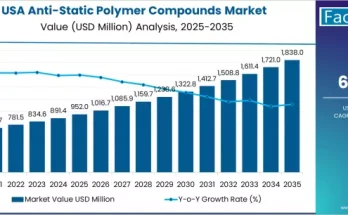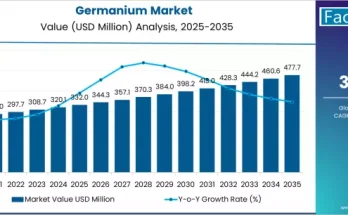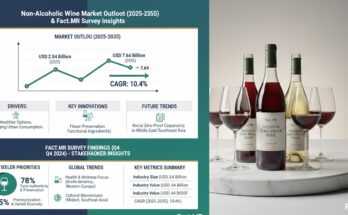The Bio Alcohol Market revenues were estimated at US$ 9.2 Bn in 2021 and is anticipated to grow at a CAGR of 6.4% from 2022-2032, according to a recently published Fact.MR report. By the end of 2032, the market is expected to reach a valuation of US$ 17.9 Bn.
The key factors that are propelling the Bio Alcohol market are the fluctuation of crude oil prices. For example, according to a report published by AAA agency, the average price of a gallon of gasoline recently hit an all-time high number of US$ 4.17, compared to US$ 2.77 one year ago. Drivers in California need to fork over an average price of US$ 5.44 a gallon. This is taking place as a result of the conflict between Russia and Ukraine, and the lower availability of crude oil.
The growing worry over anthropogenic climate change, which is fuelled by evidence of rising temperatures and their human sources, is a key force behind bio alcohol initiatives. Only a few people today disagree that action must be taken to reduce greenhouse gas emissions, and many nations are relying heavily on bio alcohols as part of their efforts to combat climate change.
Key Takeaways from the Study
- Bio Alcohol Market was valued at US$ 9.6 Bn in 2021. According to Fact.MR, Bio Alcohol Market revenue would increase 1.8X between 2022 and 2032, reaching roughly US$ 17.9 Bn by 2032.
- In terms of Raw material usage, revenue through grains based bio alcohol is projected to account for the highest projected CAGR of over 7.8%.
- In terms of product type, the Bio-Ethanol market accounted for a CAGR of 5.6% during 2017-21.
- S. is the dominant country in Bio Alcohol Market with an absolute dollar growth opportunity of over US$ 3.1 Bn.
Competitive Landscape
Some of the key players in bio alcohol market include BASF SE, Ginkgo Bioworks, BP Biofuels, Cargill Inc, Mitsubishi Chemical Corporation, Bioamber Inc., Genomatica Inc., Raizen S.A., Myriant Corporation, and Cool Planet Energy Systems Inc.
Some of the recent developments in the Bio alcohol market are:
- In June 2021, The Roadmap for Ethanol Blending in India by 2025 study was released by the Prime Minister Narendra Modi.
- In July 2019, TVS India unveiled the TVS Apache RTR 200 Fi E100, the nation’s first ever ethanol-powered motorbike, which can run on both flex ethanol fuel and pure ethanol.
More Insights Available
Fact.MR, in its new offering, presents an unbiased analysis of the Bio Alcohol Market, presenting historical market data (2017-2021) and forecast statistics for the period of 2022-2032.
The study reveals extensive growth in Bio Alcohol in terms of Raw Material (Grains, Sugarcane, Industrial beets, Biowaste, and other Raw materials) of Product Type, (Bio-Ethanol, Bio-Methanol, Bio-Butanol, Bio-Butanediol) across five regions (North America, Latin America, Europe, Asia Pacific and Middle East & Africa).


